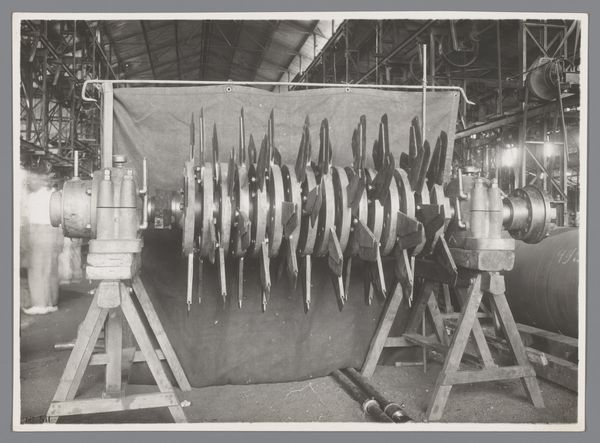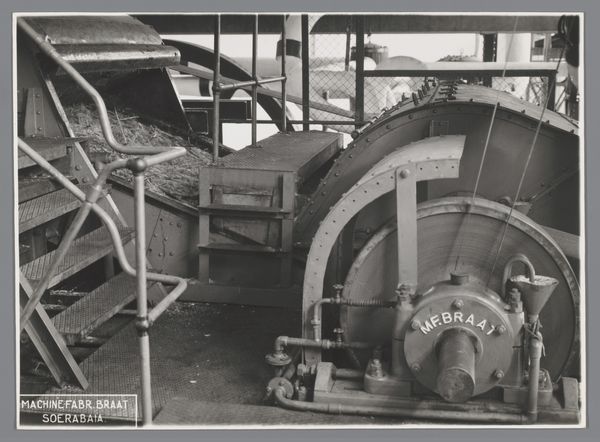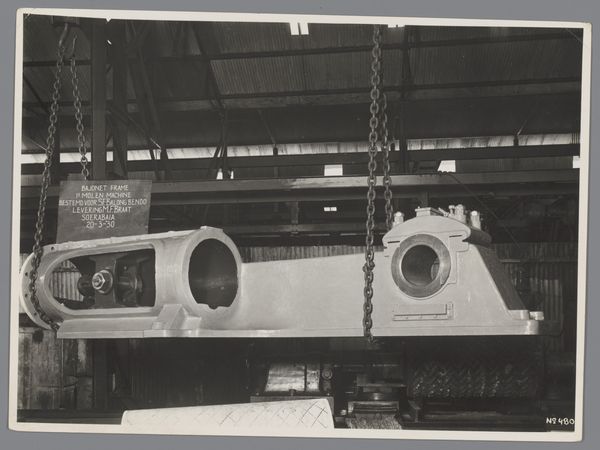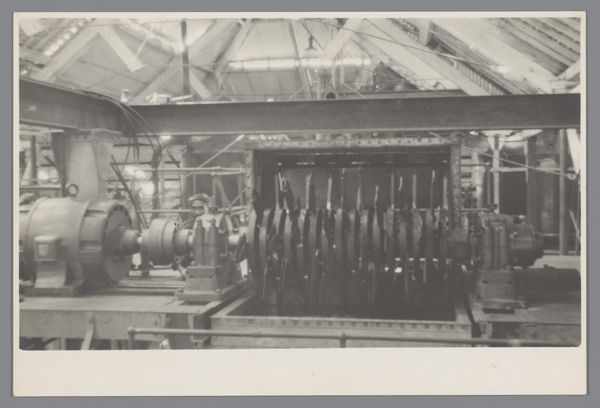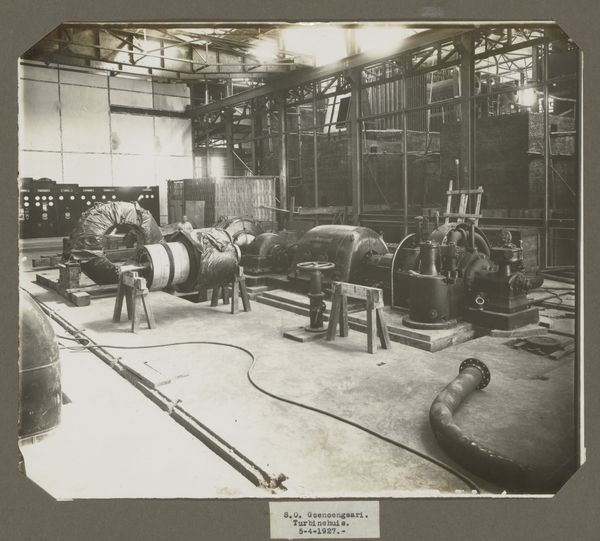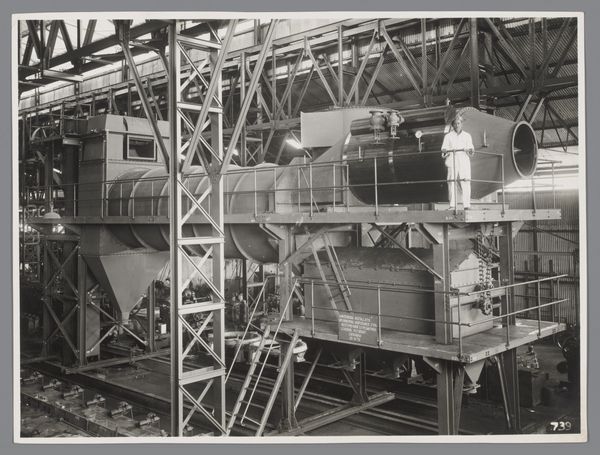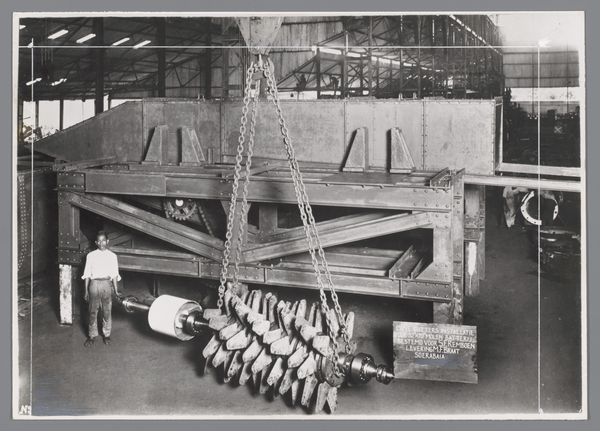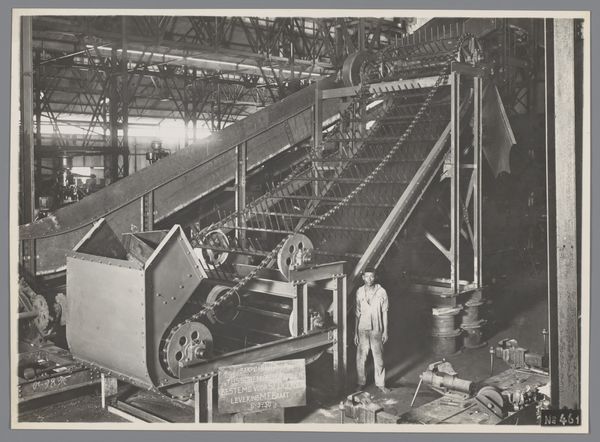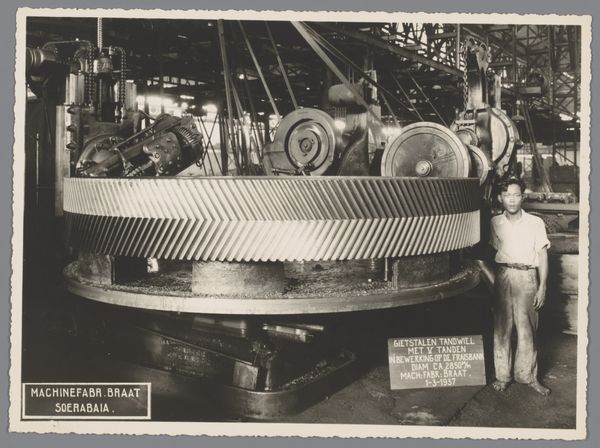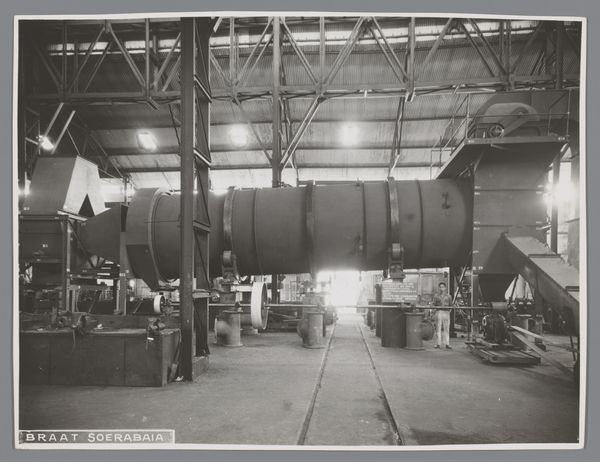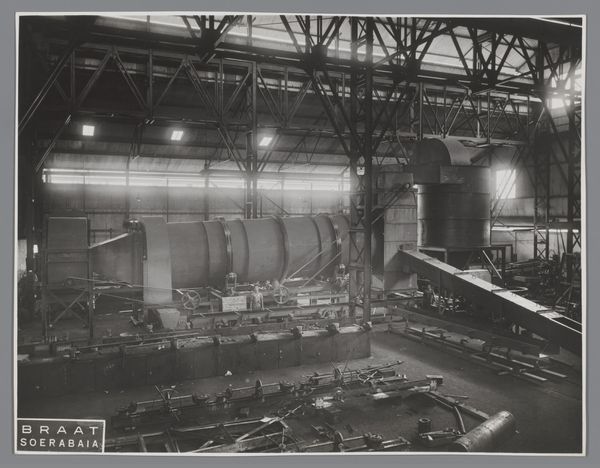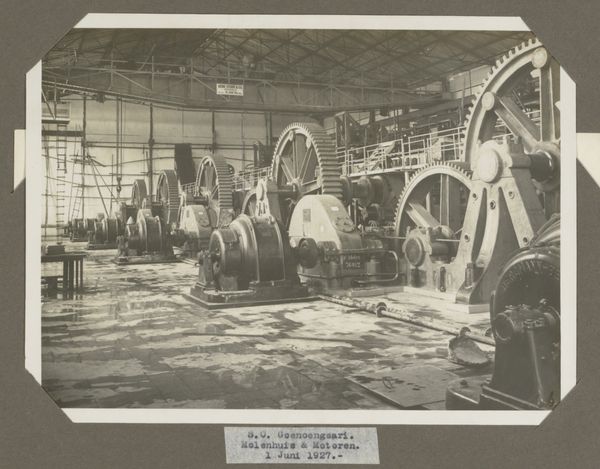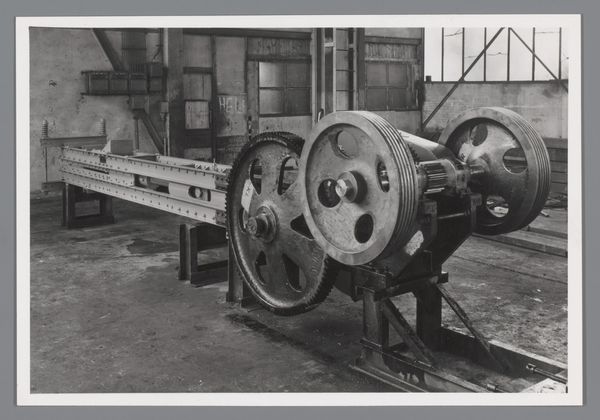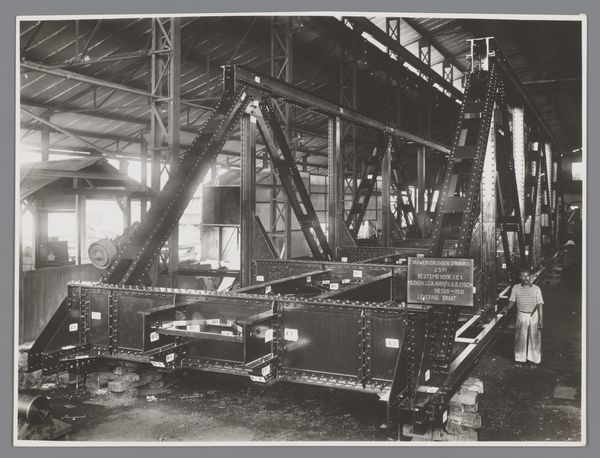
photography
#
still-life-photography
#
photography
#
realism
Dimensions: height 170 mm, width 233 mm
Copyright: Rijks Museum: Open Domain
Curator: This rather imposing photographic still life presents what the caption identifies as the Rotor voor de canecutter, created anonymously sometime between 1917 and 1938. Editor: My immediate impression is of industrial aggression, a stark, black and white machine of blades. Curator: Indeed. Cane cutters, also called cane harvesters or chopper harvesters, evoke a complex cultural and psychological narrative. On the one hand, there's the symbol of hard, grueling agricultural labor associated with sugarcane fields in tropical regions. On the other hand, one finds the potential symbol of automation threatening livelihoods. Editor: And those blades! What were they like, how were they cast? How many hands shaped each one before assembly? Those details ground the image in a reality of both design and human intervention in service to raw material. This machinery, it suggests a wider socio-economic network for production and profit that belies that simple, descriptive title. Curator: Right. Also consider the implied connection to enslaved people, people of color. Sugarcane has an unpleasant legacy. What cultural values were implicit to those who created this? What values did they assign to the materials that formed the rotor and cane cutter, not just for efficiency, but the industrialization and objectification of labour? Editor: I see the object as an icon of productivity. Curator: I understand. While these were meant to facilitate harvesting, to bring sugarcane more readily to market, its construction still had direct impact on real lives and embodied values related to how much value could be placed on efficiency. It forces the question: whose productivity are we really valuing here? Editor: Looking more closely, the arrangement in this photo aestheticizes a rather gruesome, labor-intensive aspect of society, yet highlights engineering marvels during those periods. This photo doesn't resolve questions, but invites us to explore relationships of production. Curator: Perhaps that unresolved tension makes the work resonate with us today. Editor: Indeed. Let's turn to the next object.
Comments
No comments
Be the first to comment and join the conversation on the ultimate creative platform.
